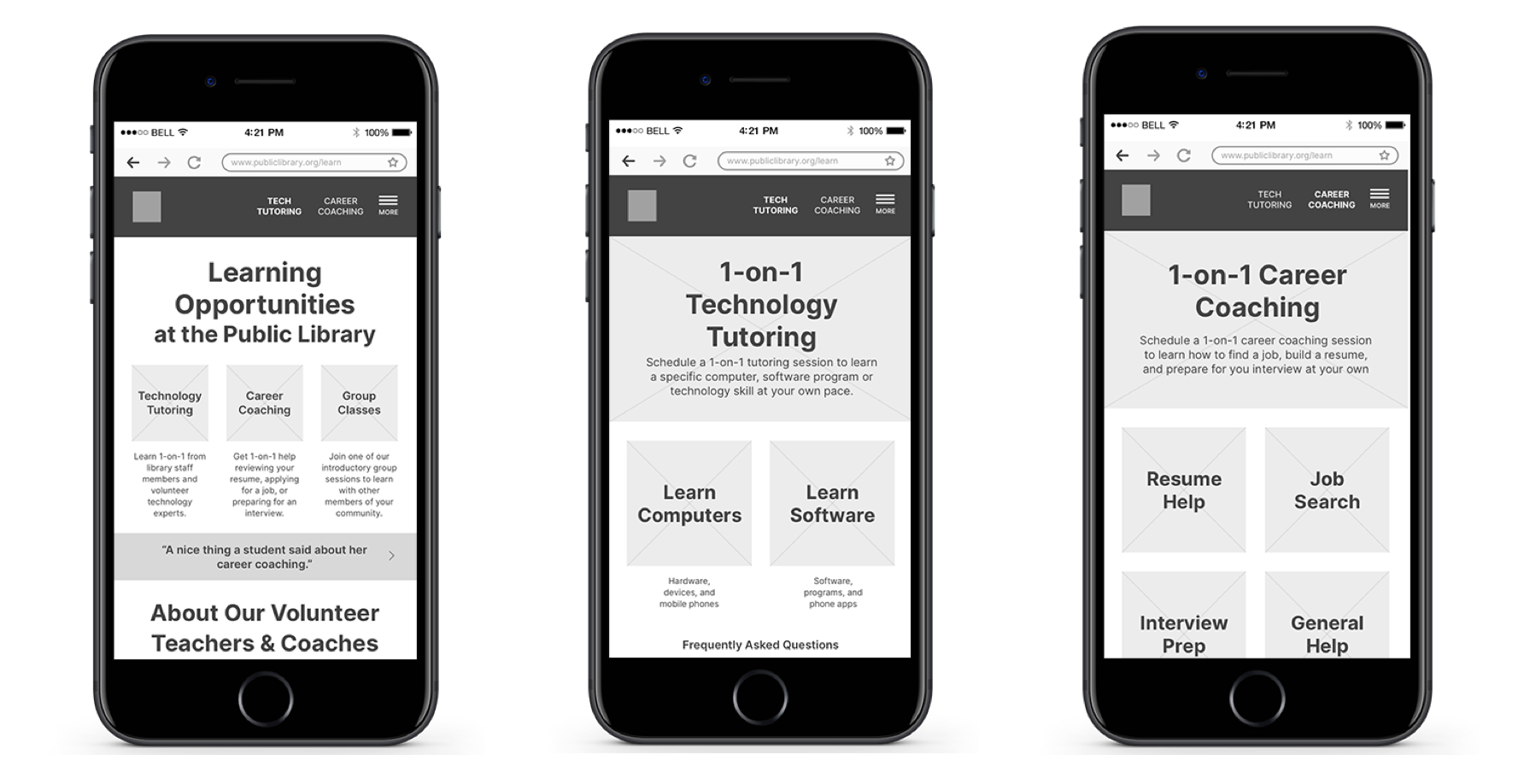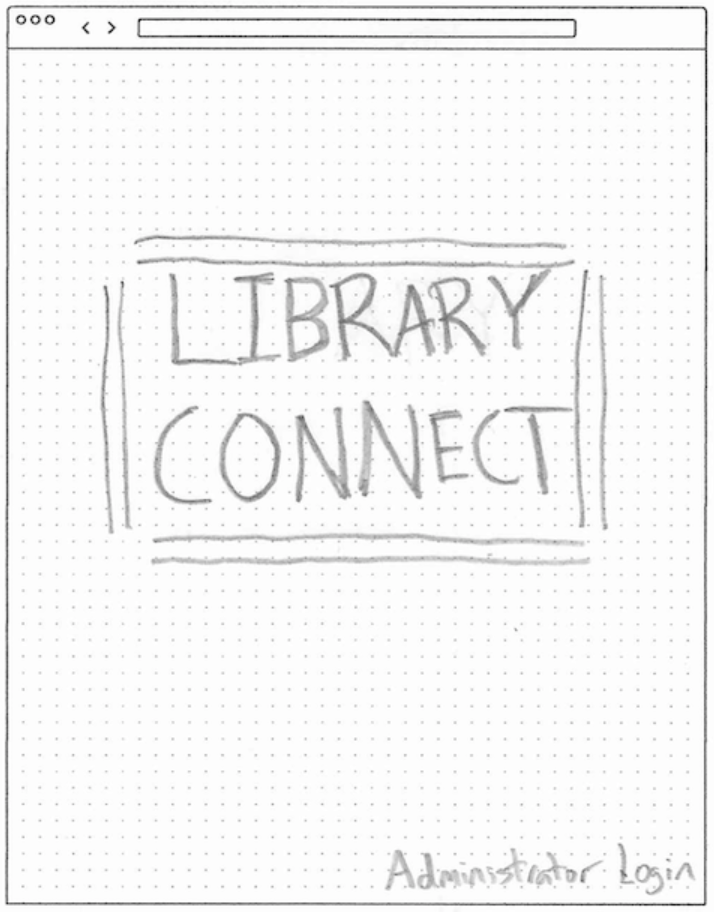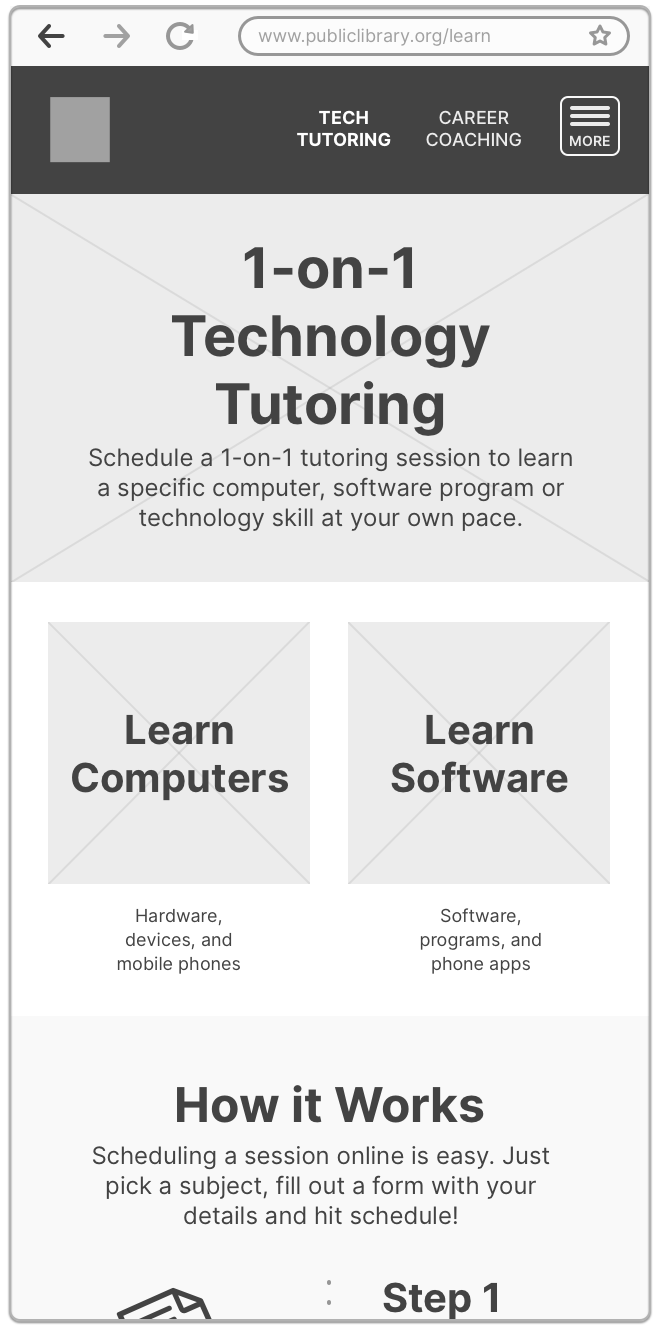
Project Summary
At Flatiron School I had the opportunity to be a part of a virtual team that worked on an application to help local libraries have a stronger role in their communities by serving as a hub for learning and volunteering. Locals can apply to be tutors at the library, where they aid those with questions about career support and using technology. Appointments are scheduled individually based on select topics. The experience is designed to assist librarians maintain their efforts to assist all patrons in the community.
Work: UX Research and Design
Client: Local Public Libraries
Time: 5 weeks
Team Size: 3
Tools: Sketch, InVision, Axure
Design Challenge
Our Brief: Libraries bring together diverse populations and provide unique access to a variety of activities, information and education.
We were given a flexible brief to create a digital tool that helps libraries build stronger relationships with their community, especially when it came to identifying and adapting to the new digital needs of patrons. We were told that community libraries, as public institutions, are constrained in resources that keep them from staying up to date and assisting with developing technologies, trends and community preferences. Libraries are committed to providing free access to information and services for everyone. We were told that local libraries desire to build more digitally inclusive communities and it was our job to get this done.
More than 92.6 million people attended the 4.0 million programs at public libraries in 2016.
Attendance showed a 1-year increase of 5.2 percent and a 10-year increase of 54.4 percent.
Our Design Problem: Our task was to research, discover and define how community patrons interact with a local library and how the library serves those needs, or doesn’t. Specifically, we need to meet the needs for one primary problem and build on that.
Research
Our Process: The majority of our research would have to come from interviewing librarians. Looking into this domain and competitors, we decided to hone in on Learning Management Systems. We assumed we would need to build a tool similar to an LMS. We conducted SME, User interviews and Contextual Inquiries and that’s when we learned that all of our assumptions missed the mark.
SME: We went out to interview the experts. I wasn’t familiar with what librarians today go through during their day to day. We were able to speak with a group of librarians and library staff across the entire country. We pulled out the following insights:
Staff has little structured training when it comes to digital tools, hardware, mobile applications and dealing with difficult social situations
Some teachers have to take it upon themselves and their discretion to make decisions on teaching material to patrons or push for change from management
Lack of funding is a major contributing reason for tech implementation and structured learning for patrons
It is difficult to adequately predict community engagement on a daily basis
There is a challenge to stay adequately resourced when libraries are open and accessible for all
I feel like I learn new technology every single week, I really do. Especially when I first started.
– Nina Solomon, Broward County Librarian
User Interviews: To get started understanding the needs of today’s library patrons, we went out on location to interview users. We were able to interview users by phone in different states. We spoke to a group of seven users that were a mix of staff, volunteers and patrons. We learned from these users that:

Sometimes on the desk you are just by yourself … so you can’t afford a half an hour to help one person. It’s like a personal coach.
– Frank Xu, Brooklyn Reference Desk Librarian
Contextual Inquiry: Because experiences could be so different at particular libraries, we went out on location again to conduct contextual inquiries. We wanted to watch library patrons in action and see how they navigate through digital tools.

We always have patrons coming in and wanting to learn new things, so we have volunteer tutoring sessions where that happens.
– Mona, Reston Library Volunteer Manager
Problem: Novice and intermediate technology users need a way to learn digital tools and skills from overextended librarians at their own pace, so that they can increase their economic opportunity.
Design Principles:
Community: The tool provides opportunities to connect people who need help with members who can help.
Trust: The library and its resources should remain a safe public space where patrons can trust the information they receive.
Inclusion: It is a privilege to serve such a diverse community of backgrounds. A broad range of skill levels and learning styles should benefit from our tool.
Accessibility: This also means designing for a variety of environments (in-person, on-the-go, at home).
Clarity: There’s a system that makes sense and is easy to follow for those who are not as savvy.
Efficiency: Less is more. We’re connecting those in need of help with those that can offer help without getting in the way.
Concepting and Testing
We began by building paper prototypes. The team knew the kind of product we wanted to concept first. We aimed to bring volunteers with software expertise to the library and have them work one-on-one with patrons. My team sketched three different paper prototypes and put them together with InVision. We sourced feedback from students at Flatiron School. I focused on a simplified interface for all ages and skill levels.
Load Concept
|
We were surprised to hear that students at Flatiron would be willing to volunteer their expertise using an app. In terms of usability however, they wanted:

Prototyping: Moving to a digital prototype, the team decided on the best features we liked from our paper sketches and what resonated with other students at Flatiron. We decided to move forward with offering technology and career help but broken down into categories, personalized accounts for patrons, volunteer matching and a mobile-first approach
Our Solution:
Learn at the Library: A comprehensive scheduling tool that allows adult students to make 1-on-1 appointments to learn with volunteers or library staff members.
Load Prototype
|
User Feedback
Feedback: We conducted a usability test for our prototype with folks who were mobile savvy. We knew that patrons could be helped by staff on location at the library with our “Learn at the Library” app as well. But we wanted to get feedback from users who were similar to our volunteers. We finished the usability test with a synthesis that:

Overall Verdict
Of the five participants in our usability test, all five voted for recommending our app to their friends. We walked away from the project feeling validated that our solution was viable: a comprehensive scheduling tool that allows adult students to make 1-on-1 appointments to learn with volunteers or library staff.
Learned Insights



